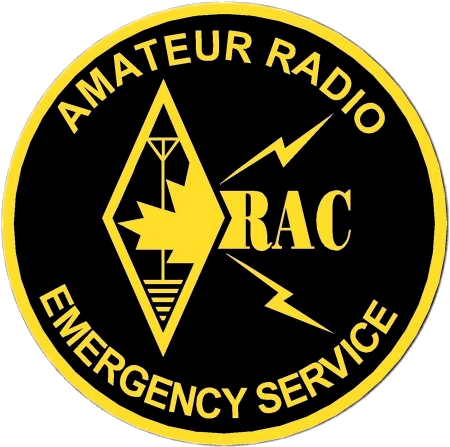Emergency communications
 In times of crisis and natural disasters, amateur radio is often used as a means of emergency communication when wireline, cell phones and other conventional means of communications fail.
In times of crisis and natural disasters, amateur radio is often used as a means of emergency communication when wireline, cell phones and other conventional means of communications fail.
Unlike commercial systems, amateur radio is usually independent of terrestrial facilities that can fail. It is dispersed throughout a community without “choke points” such as cellular telephone sites that can be overloaded..
Amateur radio operators are experienced in improvising antennas and power sources and most equipment today can be powered by an automobile battery. Annual “Field Days” are held in many countries to practice these emergency improvisational skills. Amateur radio operators can use hundreds of frequencies and can quickly establish networks tying disparate agencies together to enhance interoperability.
Recent examples include the September 11 attacks on the World Trade Center in Manhattan in 2001, the 2003 North America blackout and Hurricane Katrina in September 2005, where amateur radio was used to coordinate disaster relief activities when other systems failed. In 2017, the Red Cross requested 50 amateur radio operators be dispatched to Puerto Rico to provide communications services in the wake of Hurricane Maria.
On September 2, 2004, ham radio was used to inform weather forecasters with information on Hurricane Frances live from the Bahamas. On December 26, 2004, an earthquake and resulting tsunami across the Indian Ocean wiped out all communications with the Andaman Islands, except for a DX-pedition that provided a means to coordinate relief efforts.
Recently, amateur radio operators in the People’s Republic of China provided emergency communications after the 2008 Sichuan earthquake and U.S. hams did similar work following Hurricane Ike. Amateur radio operators provided communications in the aftermath of the Boston Marathon bombing when cellphone systems became overloaded.
The largest disaster response by U.S. amateur radio operators was during Hurricane Katrina which first made landfall as a Category 1 hurricane went through Miami, Florida on August 25, 2005, eventually strengthening to Category 5. More than a thousand ham operators from all over the U.S. converged on the Gulf Coast in an effort to provide emergency communications assistance. Subsequent Congressional hearings highlighted the Amateur Radio response as one of the few examples of what went right in the disaster relief effort.
Organization
In the United States, there are two major methods of organizing amateur radio emergency communications: the Amateur Radio Emergency Service (ARES), an organization of amateur operators sponsored by the American Radio Relay League (ARRL); and the Radio Amateur Civil Emergency Service (RACES), a standby replacement radio service regulated by the Federal Communications Commission. Operations under the RACES rules requires preregistration with a local civil defense organization, to allow continued operation under Part 97.407 of the FCC regulations in the event the Amateur Radio Service is ever shut down by presidential order. Thus ARES and RACES involvement within the same area are usually intertwined, with many governments requiring membership and service in that locale’s ARES organization to allow operations within the Amateur Radio Service as well. Many government Emergency Operations Centers, Red Cross Chapters and National Weather Service facilities have permanent Amateur Radio stations installed for such operations.
The ARRL provides extensive documentation on how to conduct emergency radio communications, including its Public Service Communications Manual.
Radio clubs independent of the ARRL and ARES also participate in emergency communications activities in some areas, and some non-radio organizations have their own amateur arm. The Department of Defense sponsors the Military Auxiliary Radio System (MARS) program which utilizes Amateur Radio operators for emergency communication using military radio frequencies. The National Weather Service Skywarn weather-spotter program has a strong amateur radio contingent. And amateurs dedicated to the Salvation Army are organized under their Salvation Army Team Emergency Radio Network program.
Emergency communications and disaster assistance is usually done in conjunction with volunteer disaster relief organizations such as the American Red Cross, the Salvation Army, local government emergency management agencies, as well as volunteer fire departments and ambulance corps.
The ARRL has memoranda of understanding with numerous agencies expected to receive services, including the American Red Cross and Salvation Army and is a partner in the Citizen Corps program of the Federal Emergency Management Agency (FEMA). The ARRL also is a member of the National Voluntary Organizations Active in Disaster (NVOAD) and conducts emergency communications certification courses for interested Amateur Radio operators.
